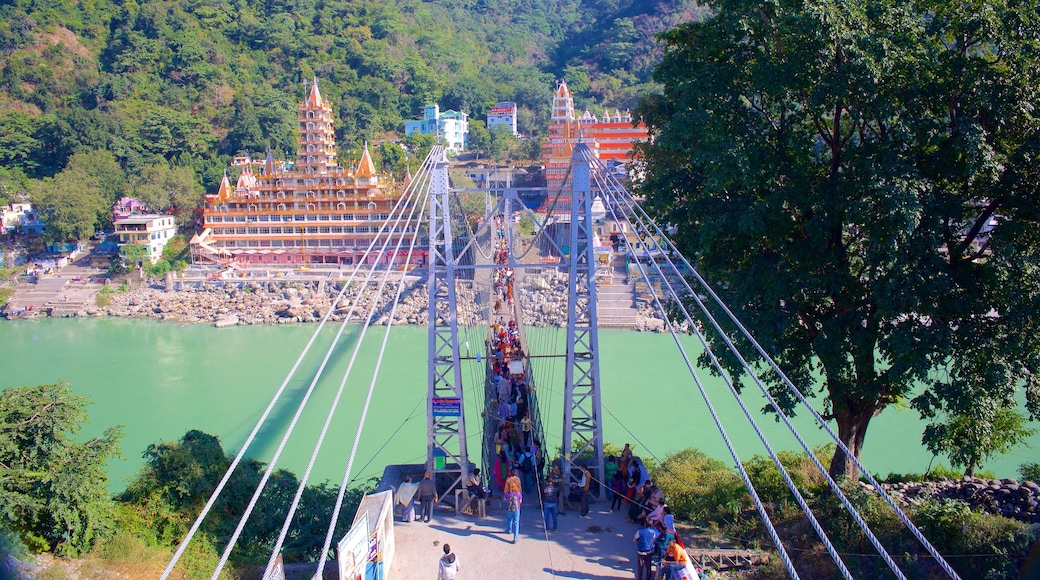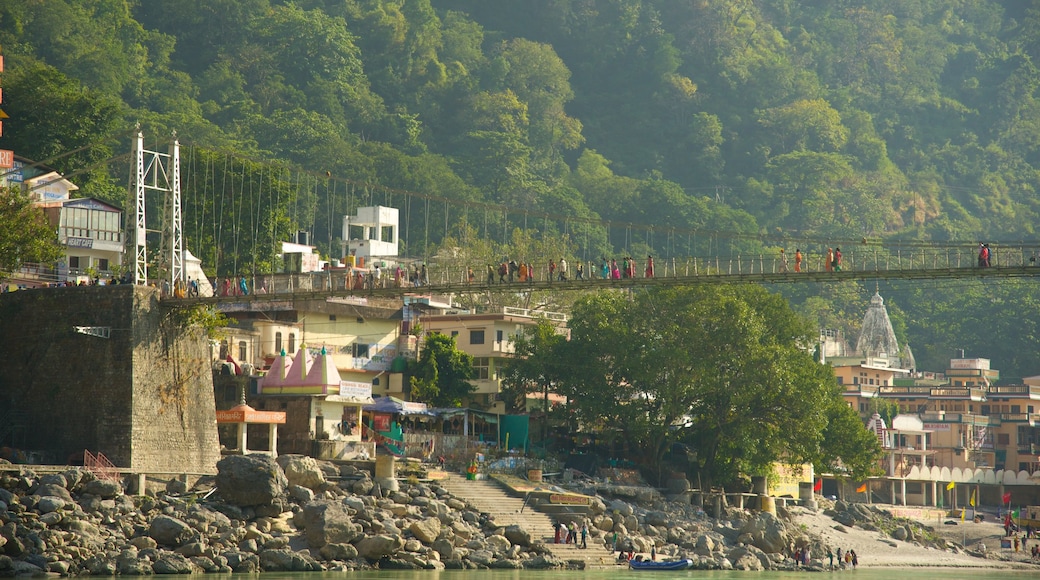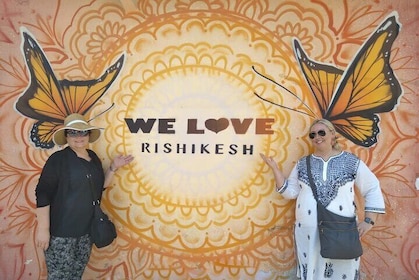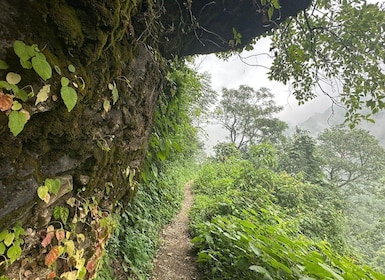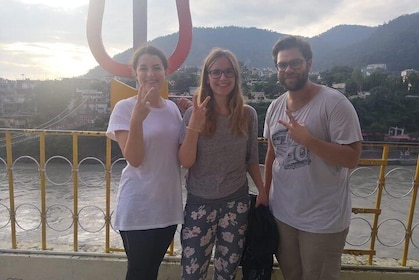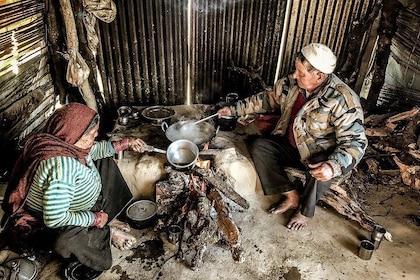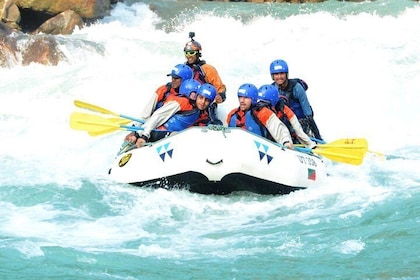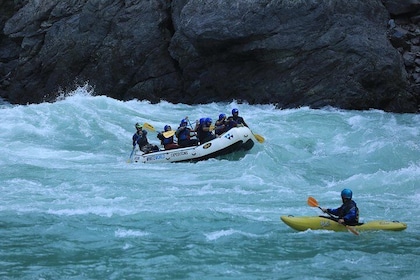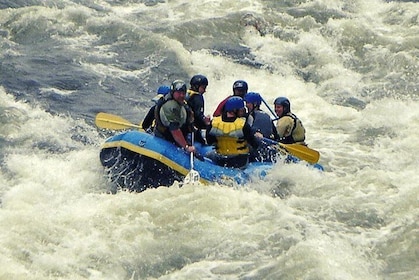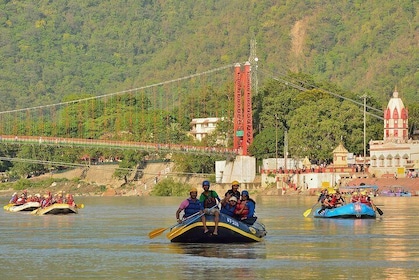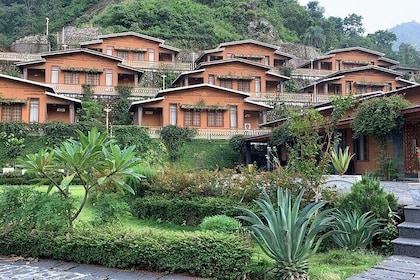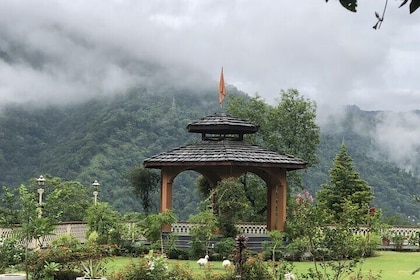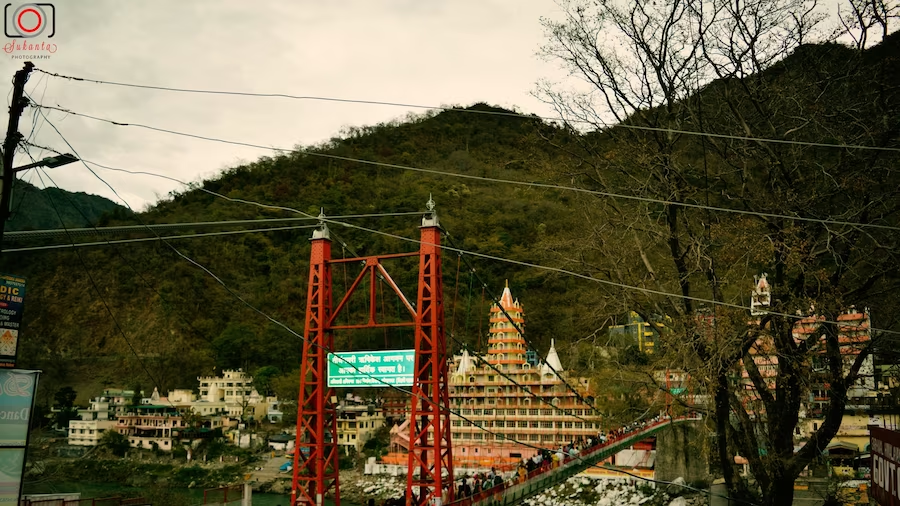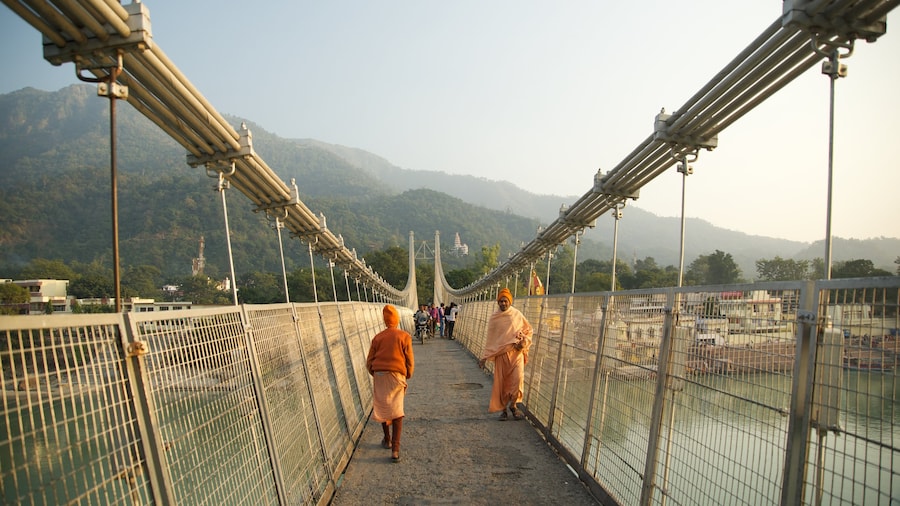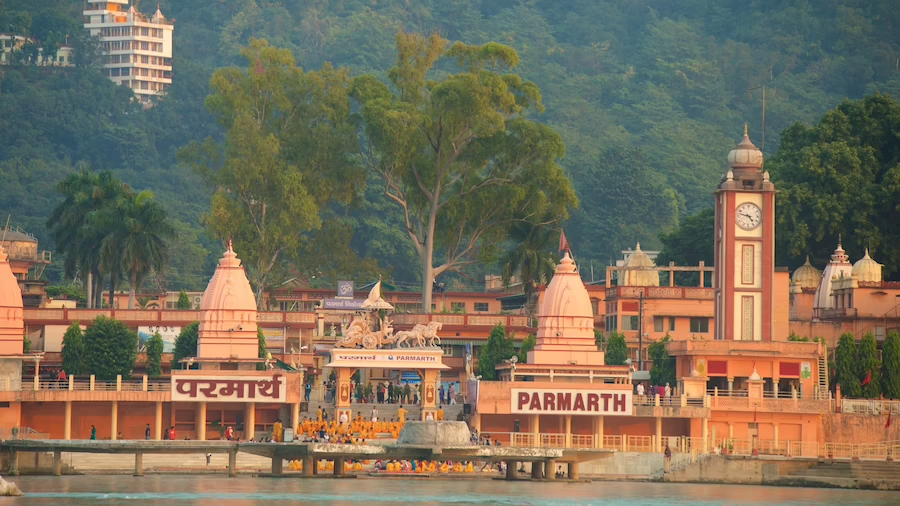Enthralling culture, stunning scenery and magnificent architecture come together to make this 20th-century bridge one of Rishikesh’s most popular attractions.
Listen to the wild waters of the River Ganges and look on as small motor boats and rafts pass underneath you on Lakshman Jhula. Visit a grand temple at one end of the bridge and purchase handmade artwork and jewelry from markets on both sides.
Built in 1939 this suspension bridge measures 450 feet (137 meters) in length and stands 70 feet (21 meters) above the river. The local people will tell you that its name comes from Lakshmana, the younger brother of Lord Sri Rama who crossed here when the bridge was made from jute thread.
Fortunately you can now cross the bridge confident in its steel construction. Peer over the railings and down over the Ganges. Steep cliffs and dense forest line the banks offering no escape for the adventurous white-water rafters you can watch paddling through this section of the valley.
Return your attention to dry land and stroll along the bridge to see people dressed in bright clothes practicing meditation and a range of religious rituals. Many will then make their way to the 13-storey Tera Manzil temple at the far end of the bridge. Climb to the top floor to enjoy spectacular views of the river as it cuts a path through the rugged green mountains.
The bridge connects the Tehri and Pauri districts and both of these have extensive markets nearby. Walk to either end and you will find a vast selection of stalls where local artisans sell handcrafted goods. Find wooden sculptures and paintings or search for pretty garments and jewelry.
Lakshman Jhula is approximately 5 miles (8 kilometers) north of Rishikesh. The bridge is now used by small motorized vehicles as well as by visitors on foot. It is always open and there is no fee to cross.


